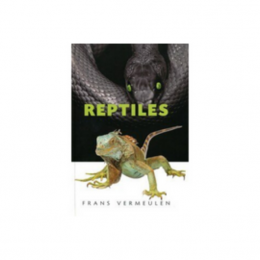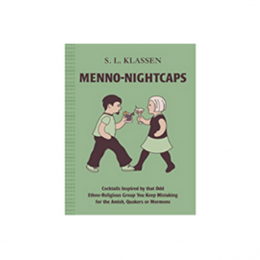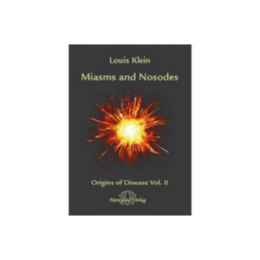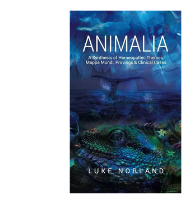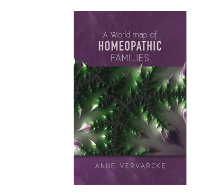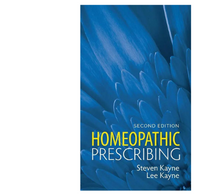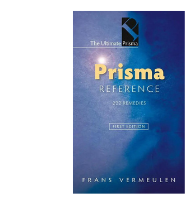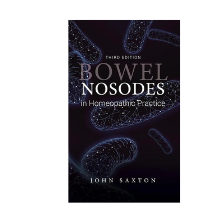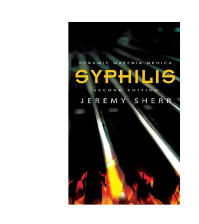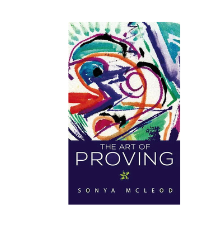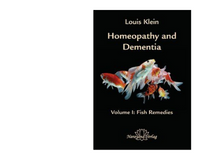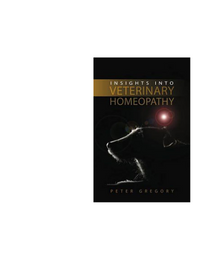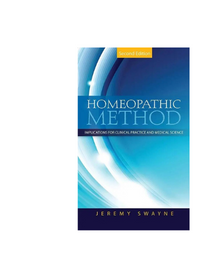Menno-Nightcaps by S.L. Klassen
A satirical cocktail book featuring seventy-seven cocktail recipes accompanied by arcane trivia on Mennonite history, faith, and cultural practices. At last, you think, a book of cocktails that pairs punny drinks with Mennonite history! Yes, cocktail enthusiast and author of the popular Drunken Mennonite blog Sherri Klassen is here to bring some Low German love to your bar cart. Drinks like Brandy Anabaptist, Migratarita, Thrift Store Sour, and Pimm’s Cape Dress are served up with arcane trivia on Mennonite history, faith, and cultural practices. Arranged by theme, the book opens with drinks inspired by the Anabaptists of sixteenth-century Europe (Bloody Martyr, anyone?), before moving on to religious beliefs and practices (a little like going to a bar after class in Seminary, but without actually going to class). The third chapter toasts the Mennonite history of migration (Old Piña Colony), and the fourth is all about the trappings of Mennonite cultural identity (Singalong Sling). With seventy-seven recipes, ripping satire, comical illustrations, a cocktails-to-mocktails chapter for the teetotallers, and instructions on scaling up for barn-raisings and funerals, it’s just the thing for the Mennonite, Menno-adjacent, or merely Menno-curious home mixologist.
Animalia by Luke Norland
Animalia aims to simplify the process of researching animal remedies for both students and seasoned professionals alike. This practical book illuminates the Homeopathic themes of 6 animal families through the prism of mythology, mappa mundi, provings, cases and repertory. There is also a useful appendix on the miasms and their mythological correspondences. Beginning with a broad outline and differentiation of the 3 main kingdoms (animal, plant & mineral), and a comprehensive introduction to the circle of elements, Luke goes on to outline themes of the Spiders, Birds, Insects, Mammals, Snakes and Sea animals. He synthesises provers’ expressions from a diverse selection of classical and modern texts to give an insight into the raw human experience of the different remedy states belonging to each group. Then he gives portraits of a wide selection of individual remedies from within each group, where you will find source information, characteristic rubrics, extracts from the provers and case examples. These portraits are designed to sit alongside existing materia medica, focusing on the singular expressions that may with time and further clinical use become guiding symptoms. Luke has a talent for organizing a broad spectrum of reference material - adding nuance and giving shape to the symptoms so that the Homeopath can be guided to the mode of action of each remedy, whilst keeping in mind the broad themes of the family.
A World Map of Homeopathic Families by Anne Vervarcke
A World Map of Homeopathic Groups and Families aims to make homeopathic practice manageable again. Unlike the early days of homeopathy and particularly in the last 20 years, homeopathic students and practitioners now have access to a bewildering amount of information - new provings, books, systems and computer programmes all add to an already extensive body of knowledge. But how does the practitioner incorporate all this new data into their work? This book aims to answer this question by guiding us to take a step back from a case for a more 'big picture' view before examining the smaller details. It introduces the concepts of 2D / 3D groups and the Vital Approach Map of Homeopathic Families which Anne likens to a treasure map for the similimum. Practitioners will learn how to identify clear pointers for the bigger groups and families, what other key information to look for in a case, how to connect the dots and recognise patterns leading to more efficient prescribing and improved outcomes. Anne's straightforward approaches are beautifully presented in this book. Through them we gain not only a broader perspective but also deeper understanding that allows our homeopathic practice to be taken to a whole new level.
Homeopathic Prescribing (2nd edition) by Steven Kayne and Lee Kayne
Originally devised at 36000 feet over Siberia, this book was initially commissioned by the Royal Pharmaceutical Society for practising pharmacists and other health professionals. The second edition has been revised to make it more accessible to everyone and is laid out to make it easy to find the most important information on all aspects of homeopathy quickly and concisely. Part 1 - An introduction to the principles of homeopathy as a self-contained curative system. The basics of anthroposophy, biochemical tissue salts and flower remedies are also explained. Part 2 - 56 flow charts (decision trees) which will help properly target the most appropriate homeopathic remedy for a wide range of commonly seen acute conditions, whether you are an experienced practitioner or newcomer to homeopathy. The charts are complemented by supplementary materia medica notes to further inform your choice of remedy. The majority of remedies referenced in this book are readily available over the counter in pharmacies or online. "This book is one of the best-organised homeopathic works I have ever seen. It gives you confidence; it provides a footing for quick homeopathic action when time is of the essence. No theory, no prolonged intellectual discussion, just a guide to the action needed, here and now." - Ivo Wiesner in the Homeopathic Links Journal
Prisma Reference by Frans Vermeulen
Homeopaths are always eager to have the latest repertory with the most additions to keep the greatest amount of info at their fingertips. The same should be true with materia medica – they should contain information that is both accurate and current. For over 20 years, Vermeulen materia medicas have provided reliability, breadth and depth, cutting edge details supporting the changes in methods of prescribing. That is why they are the best selling and most trusted materia medicae in homeopathic practice. The Ultimate Prisma Collection contains the most remedies and the most detailed information of any materia medica, including hundreds of remedies not found in any other text. This work also features the most comprehensive list of remedies, all accurately identified, categorised and described, considerably improved, revised and expanded from Vermeulen’s previous works. To reflect new prescribing practices 'Sensation' entries have been added. These are the tools of our profession – a carpenter would not keep a dull saw, a seamstress would not keep an outdated sewing machine, a cook would not use stale ingredients. To achieve the best results homeopaths must constantly update their reference materials and ensure that they are working with information of the highest quality. A small change in the placement of a plant into a different family, new source details about a mineral or the addition of a new animal remedy can make a huge clinical difference.
Bowel Nosodes in Homeopathic Practice (3rd Edition) by John Saxton
The group of eleven homeopathic remedies known as the Bowel Nosodes are unique in both their derivation and the opportunities that they offer. Although they have some indications in acute prescribing, because of the connection and resonance that they have with the miasmatic forces that are active in the body, they are particularly useful in the treatment of chronic disease. The origin of these remedies lies in human medicine, and there are still major indications in that field. Their development is traced and the concept behind them is explained and discussed within the context of modern homeopathic thought. The general uses of the group in the clinical situation are outlined, and the materia medica of the individual bowel nosodes is discussed. The various methods of using the bowel nosodes are illustrated with nine case histories from the human world and ten from the animal, demonstrating the common guidelines that are applicable to all species. The third edition is revised, expanded and updated.
Syphilis (2nd Edition) by Jeremy Sherr
Over ten years have passed since the first edition of this book, and Saltire are happy to present this second enhanced edition. The Dynamic Materia Medica of Syphilis is a web composed of eleven syphilitic remedies, each approached from a different perspective, each representing a lesson in materia medica study; essays and provings, essences and toxicologies, affinities, poetry, mythology, history, analysis and synthesis are all spread over an underlying bed of philosophy. The left and right pages represent the parallel approaches of science and art. The synthesis of all these strands culminates in an exciting conclusion on the nature of the syphilitc miasm and its underlying psoric roots. While this book is an easy and enjoyable read, it is also an exercise book for the thinking homoeopath. Many clues lie buried below the surface, mimicking the hidden nature of our cases. The reader's challenge is to uncover and synthesise this information. This effort should pay dividends in all aspects of homeopathy, from case solving to a deeper perception of materia medica and philosophy. In this new edition Jeremy includes a commentary with solutions to many of the riddles. This can be read first as a guide or left to contemplate after the tantalising end!
The Art of Proving by Sonya McLeod
Each and every homeopathic remedy contains within itself the ability to heal unique, characteristic signs and symptoms. These characteristic healing symptoms that are contained within each remedy are an unchanging eternal truth that remain constant through space and time. Homeopathic provings are an effective way to experience and interpret the signs and symptoms (i.e. the eternal healing effect) of remedies. Yet it is somewhat puzzling that provers are able to accurately access the remedy state during unconventional provings where no remedy is ingested, such as dream provings, meditative provings and trituration provings. Since discovering trituration provings in 2010, the author has found them to be a deep and extremely accurate way of exploring a remedy’s healing ability. During the process of making the remedy by hand, while triturating the substance with milk sugar, a doorway is opened to what Jungian psychologists call the collective unconscious. The collective unconscious is like a world database of information that each and every living thing on the planet is connected to. Contained within the database of the collective unconscious is the eternal, unchanging truth of the healing ability of each and every homeopathic remedy. Provings are the author’s higher calling, the vehicle through which her soul journeys towards wholeness. So far, Sonya has conducted provings of 14 different remedies over an eight year period and in this beautiful full colour work, nine complete remedy provings including physical, mental and thematic summaries are given for Albino ‘Ghost’ Redwood, Northwestern Crow, Herkimer Diamond, Woad, Wild Horse, Angelite, Black Kyanite, Raccoon and Giant Panda.
Homeopathy and Dementia- Volume I: Fish Remedies by Louis Klein
It seems we have always known fish is good for the brain. Now, in this first of two volumes on homeopathy and dementia, master homeopath Louis Klein comprehensively examines, with the application of homeopathic fish remedies, one of the biggest health issues currently facing the ageing population. The homeopathic perspectives of cognitive decline are described, and a fascinating exploration of the general themes of fish remedies follows. Materia medica of the 32 fish remedies includes the natural history and dementia indications and a Clinical Focus Guide. The book comprises not only known fish remedies like Gadus morhua, Oleum jecoris or Serum anguillae but also many unknown remedies like New Zealand kahawai, white sturgeon, great white shark, Atlantic herring, electric eel, guppy, angelfish, wels catfish, tuna and brown trout. As well, there are many illustrative cases, case vignettes and selected notes from the various provings, both modern and historical. Volume 1 concludes with definitions of all the various pathologies that come under the umbrella of ‘dementia’. There is currently a dearth of information on the homeopathic treatment of dementia. This major text from Louis Klein is one of the first to tackle this crucially important topic in such an extensive manner and will therefore be essential for homeopaths working with seniors and immensely valuable to all practitioners. Volume 2 will follow, with remedies from the other kingdoms and a detailed lifestyle guide.
Insights into Veterinary Homeopathy by Peter Gregory
For a veterinarian attempting to make the transition from the orthodox paradigm to homeopathy there are many challenges. These include: looking anew at the concepts of 'health' and 'disease'; trying to assess mental and emotional symptoms in a patient who cannot speak our language; dealing with the emotional reactions of those who do not share the same knowledge or experience. The first part of the book is devoted to examining the fundamental concepts which together provide a foundation for veterinary homeopathic practice, and how they may be understood from a modern perspective. This is followed by an investigation into some of the most common remedy states encountered in practice, with guidance on how to recognise them in an animal patient; not only by how they present outwardly, but also by accessing those elements of the patient that would otherwise be considered as hidden. Finally the author investigates the personal experience of practising veterinary homeopathy.
Homeopathic Method by Jeremy Swayne
There can be little doubt that ‘homeopathy works’. For all the controversy surrounding the nature and effect of homeopathic medicines, the clinical outcomes and improvement in wellbeing achieved by homeopathic treatment are consistently good. In many instances they defy the expectations of conventional biomedical treatment, and demonstrate the remarkable extent to which our minds and bodies are capable of self-regulation and self-healing. In this book, Dr Jeremy Swayne unpacks the therapeutic ‘black box’ of the homeopathic method. He describes in detail a process of clinical enquiry and observation that is essentially entirely conventional but that casts a new light on the dynamics of illness and healing. His analysis does not depend upon any a priori assumptions about the activity of homeopathic medicines, but insists that both their effects, and the contextual aspects of the therapeutic process that homeopathy exemplifies and that is so important in all medicine, demand fuller investigation. The implications for the future of clinical practice and medical science are truly profound.

